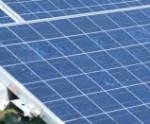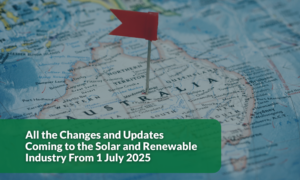An independent report shows Australia’s 20 per cent Renewable Energy Target (RET) has generated $18.5 billion in investment overall so far, with potentially many billions more to be invested – if the policy is left unchanged.
Released by the Clean Energy Council, the report shows Australia’s Renewable Energy Target has resulted in a reduction of fossil-fuel base power generation since it was introduced since 2001 and has also assisted in reining in wholesale electricity prices.
“The report shows that, if left unchanged, the Renewable Energy Target will result in 12 per cent less coal-fired generation and 13 per cent less gas-fired generation between now and 2030, with no reliability or security of supply issues identified,” said CEC Chief Executive David Green.
“Retaining the current Renewable Energy Target will also mean we can meet the bulk of our target for reducing carbon emissions with renewable energy projects right here in Australia, supporting local jobs in regional areas.”
The report, prepared for the CEC by strategic consultancy SKM MMA, also shows Australian households have contributed substantially towards renewable energy investment in the form of home solar power system uptake- and will continue to do so.
Investment in PV systems amounted to around $2.5 billion by the end of 2010 and is projected to reach approximately $21.1 billion by the end of 2020, assuming the RET and other support measures continue as planned.
The level of electricity generation from small scale PV is projected to increase from approximately 1,300 GWh in 2011 to around 8,200 GWh in 2020.
The report states:
“Even though the projected volume of SRES generation is much larger than first anticipated, this does not necessarily translate into an equal relative increase to scheme cost. Rather costs are going to be less because of lower installed costs, reduced level of support as multipliers and other support measures are reduced, and the countervailing impact of lower wholesale prices.”
The multiplier, more commonly known as Solar Credits, is due to be phased out entirely on July 1 next year. However, the Productivity Commission has advised in recently released draft recommendations that it and other subsidies for small scale solar panel systems should be ended “as quickly as practicable”.
The Climate Change Authority is currently conducting a review of the Renewable Energy Target.
The full report: “Benefits of the Renewable Energy Target to Australia’s Energy Markets and Economy” can be viewed here (PDF).












































